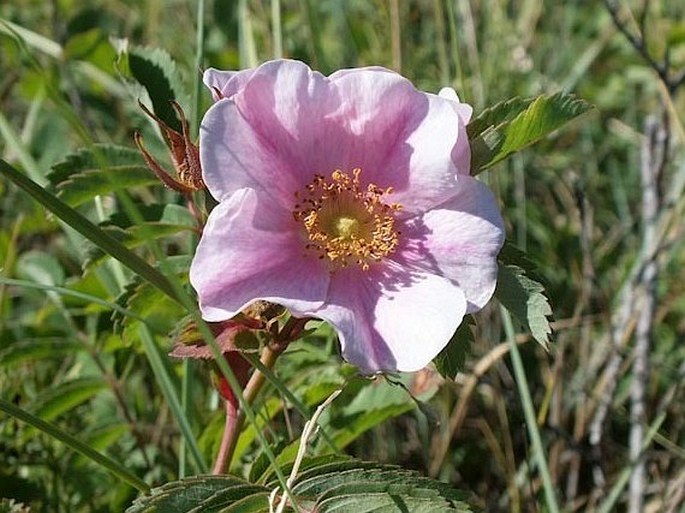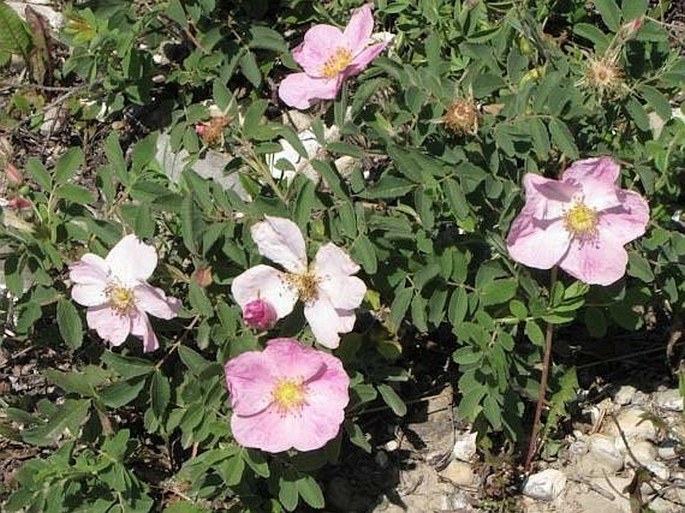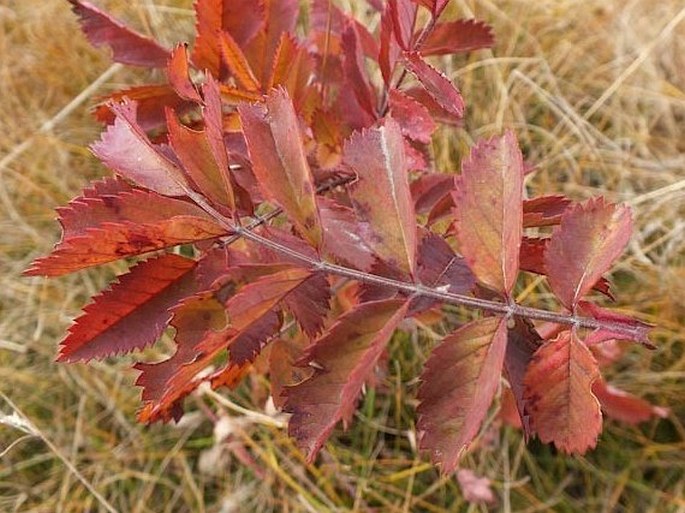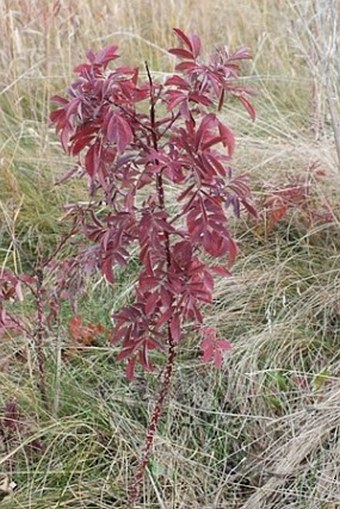Syn.: Rosa blanda var. arkansana Best, Rosa lunellii Greene, Rosa rydbergii Greene, Rosa virginiana var. arkansana MacMillan
Family: Rosaceae Juss.

Distribution: Species of North America, found in prairie regions of the continent, reaching foothills of Rocky Mountains. Secondarily it appears on Northeast coast of US and southeast of Canada. In the area there are two varieties.
Ecology: Grows in prairies, dry grassy meadows, shrubbery and forest margins. Blooms from June to August.

Description: Low deciduous shrub, 15–50 cm tall, stems dying back to ground level each fall, prickles 3 mm long, soft, bark reddish brown. Leaves alternate, deciduous, petiolate, pinnately compound, 7–11 leaflets, elliptical to obovoid, 1–4 cm long, margins sharply dentate, stipules hairless, often glandular-toothed near tip. Inflorescence terminal, 2–5-flowered corymb; flowers pentamerous, 4–7 cm across, pink to white; sepals simple, lanceolate, 10–25 mm long, glandular; petals 15–25 mm long. Fruit is an achene borne in red globe-shaped ‘hip’, with erect lasting sepals, 10–20 mm across.




These images were taken in Canada, Alberta, Manyberries Badlands (August 2013), Alberta, Calgary, Nose Hill Park (summer 2013), and Alberta, Calgary, Cougar Ridge (14. 10. 2013).


